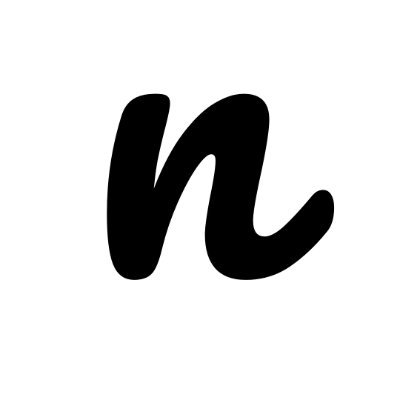Content creation processes are getting increasingly complex. Content creation involves a number of collaborators and stakeholders, and to get good result from the content created, you also need a lot of investment in content planning and optimization. So we asked businesses and content marketers – how do they manage these complexities and build content to deliver results?
Specifically, we asked them these 4 questions (and awesome insights followed):
- What kind of content do you create and for what purpose?
- What does your content creation process look like? What tools do you use to streamline it and make it efficient?
- What are your biggest challenges with respect to your content creation process?
- What makes your content creation process work (some tips and tricks)?
TL;DR – Content Creation Process – Key Insights
- You need a well-defined and appropriately supported content process to create quality content, consistently.
- It’s no longer possible to manage content processes on documents, sheets and emails alone, you need specialized content collaboration and project management software.
- Creating content briefs, even though effort intensive, ensures that you get high quality content, optimized for search engines and readers.
- It’s important to stay flexible with your content plans and calendars to incorporate trends, news and new ideas.
- Involving subject matter experts helps you create better content, but can be challenging and needs to be managed for efficacy.
- Getting approvals from clients and stakeholders are often road blockers, but setting deadlines can help.
- Constant and timely communication with team and streamlining the content creation workflow is critical to the content process’ success.
Quotable Quotes on Content Creation Process
“You need some sort of content management system to stay on schedule and maintain consistent quality” – Reuben Yonatan
“Content for content’s sake is a waste. Even content for SEO is a waste if traffic can’t be monetized. Not all traffic is equal!” – Michelle Segovia
“Ensure the team has access to all tools they might need for research, content creation, editing, and publishing. We also have a weekly show-and-tell where all teams report progress, discuss initiatives and understand how everyone contributes to achieving quarterly goals.” – Siddharth Deswal
“Following a steady (and automated) workflow helps with content production. You want to use collaborative tools and content management systems where everyone participates as and when necessary.” – Meryl D’Sa-Wilson
“If you have internal people who know your industry inside and out, consider leveraging their knowledge and provide them opportunities to generate topics and ideas for your content marketing.” – Ryan Stewart
This is what the the 21 business owners and marketers had to say:
1. Reuben Yonatan, CEO at GetVOIP
 What kind of content do you create and for what purpose?
What kind of content do you create and for what purpose?
We create comprehensive blog posts and explainer guides that get us backlinks and give our readers real information that can spur a purchase.
What does your content creation process look like? What tools do you use to streamline it and make it efficient?
We use Wrike to assign projects and keep track of them at each step. Our team knows where we are on a given piece of content at all times and we make sure the stakeholders are all kept informed. It keeps us on schedule and allows us to maintain consistent quality. Basically, you need some sort of content management system, even if it’s ad hoc.
What makes your content creation process work (some tips and tricks)?
Go big. A short blog post never hurts, but if you want to get linked on other websites and drive long-term traffic to your own business page, then you need something that’s going to stand out. Have your designers work closely with your writers so there’s a synergy between the visual and written parts of your content.
2. Andrew Taylor, Director at Netlawman
 What kind of content do you create and for what purpose?
What kind of content do you create and for what purpose?
We create a lot of informative articles based on providing valuable reading to those who are interested in our services. It can be news based/current events as well.
What does your content creation process look like? What tools do you use to streamline it and make it efficient?
Once every couple of weeks, I sit down and provide a list of relevant content I feel needs to be developed. If something current pops up, there will be an urgent address for content creators to develop a piece, or I will personally myself. It is critical we remain relevant. But on slow news days, we have a previously planned pieces, and this creates a nice flow for our readers
What are your biggest challenges with respect to your content creation process?
Relevancy is definitely the biggest issue.
What makes your content creation process work (some tips and tricks)?
One trick I have is to revamp older content often, especially when you are running short of ideas. I like to change up the way the content is delivered (podcast, video, traditional blg etc) so that we can reach different people or get a point across that might have been missed by a certain person in a particular way.
3. Michelle Segovia, VP of Marketing at Journeypure
 What kind of content do you create and for what purpose?
What kind of content do you create and for what purpose?
Content for content’s sake is a waste. Even content for SEO is a waste if the traffic can’t be monetized. Not all traffic is equal!
One purpose we create content for is links. This can be digital PR campaigns for media links or comprehensive resources on a niche topic for resource page links. We hope to get some conversions from this content, but the purpose is to add credibility to our entire site with good links.
For conversions, we create content for qualified searches. These are articles that aren’t direct searches for our service, but indicate some level of need for our service. As an example, people searching for wet brain, which is a disease caused by alcoholism over many years, would likely be in need of our alcohol treatment centers. This will have much high conversion than a page about 10 famous alcoholics.
Other content is created to serve an internal purpose, like a page about what to pack for rehab.
Then, of course, there’s the money pages. There’s not tons of scale with these pages, but we spend time constantly optimizing them to capture as many people searching directly for our services as possible.
What does your content creation process look like? What tools do you use to streamline it and make it efficient?
We keep a running Google doc of ideas and add to that list once a quarter. Every month, we prioritize what should be the priority articles in the coming month. We are generally working on one article for links and four articles for conversion a month.
For each article, we come up with tons of questions. The questions go to one of our doctors and come back to our editor who works with the designer on the images.
For tools, we use the SEMRush Google Docs extension to write better. (There are other free tools that do similar writing checks like Hemingwayapp.com or the Yoast SEO plugin). We use Blog2Social WordPress plugin to push things our and LinkWhisperer for internal linking. We use Canva for images too.
What are your biggest challenges with respect to your content creation process?
Since we’re a medical topic, the content starts with our doctors. The hardest part in working with them is getting direct answers. The doctors were hesitant to make opinionated statements when they didn’t know all the medical details of each person reading the article. It took coaching to get them to approach the questions as if a patient came into the office asking the question. And, they also started writing more note-style once they saw that the editor was doing a great job. The note style was much better than them trying to come up with fancy sentences for everything.
What makes your content creation process work (some tips and tricks)?
The key of content creation is to always have a purpose for your content. Otherwise, you will look back and wonder what all the time and effort was even worth.
4. Ryan Stewart, Owner at Webris
 What kind of content do you create and for what purpose?
What kind of content do you create and for what purpose?
We create the kind of content that attracts inbound links organically. We create content that establishes depth and topical relevance (authority) for our website. We create content that is sharable on social media. Finally, we make content that consistently ranks our website for top funnel keywords.
What does your content creation process look like? What tools do you use to streamline it and make it efficient?
Two of the tools we use to make the actual creation process more timely and efficient are framing cubes and detailed writing outlines. Other aspects of our content creation process include:
- Developing audience personas.
- Varied approaches for generating content ideas.
- Building out a content strategy deck.
Supporting tools we utilize include website auditing tools and keyword gap analysis
What are your biggest challenges with respect to your content creation process?
One challenge of content creation is that the process can drag on longer than is ideal.
What makes your content creation process work (some tips and tricks)?
One tip I offer in terms of content creation is if you have internal people who know your industry inside and out, consider leveraging their knowledge and provide them opportunities to generate topics and ideas for your content marketing. These ideas have the added value of being highly authoritative because they offer a deep insider perspective.
5. Kevin Cook, Chief Product Owner at OnTheMap Marketing
 What kind of content do you create and for what purpose?
What kind of content do you create and for what purpose?
We create content based on clients needs and their target keywords or audience.
What does your content creation process look like? What tools do you use to streamline it and make it efficient?
Essentially, we take a broad topic, what we like to call a cornerstone piece, and then write a bunch of related articles for ALL the subcategories possible. This helps provide an encyclopedia like website filled with useful, relevant information for readers to make sure we answer every question and touch on all topics. We use SurferSEO for a lot of content creation as it allows us to ensure we have a perfectly optimized article ready for publishing. This allows us to rank faster and quicker for our clients.
What are your biggest challenges with respect to your content creation process?
Our biggest challenges in this regard are that we sometimes have a lot of keywords to hit in one article and it may read a bit clunky. We’ve done our best to train the content team to add these keywords as naturally as possible to make sure the content reads like a professional article.
6. Siddharth Deswal, Director of Marketing at Fyle
 What kind of content do you create and for what purpose?
What kind of content do you create and for what purpose?
We have so far created content for Marketing and Customer communication.
Marketing Content:
- Blog articles: Non-gated, SEO landing pages to increase traffic to the website and Product-focused blogs
- Whitepapers, Checklists, eBooks, Webinars: On-demand content for lead generation
- Guest posts: For off-page SEO and backlinks
- Case studies: Middle of funnel content (This is important to us because we’re a B2B SaaS company, and reviews play a massive role in the buying process.)
What does your content creation process look like? What tools do you use to streamline it and make it efficient?
The first step of the content creation process is keyword research.
Competitor keyword research: Use a tool like Ahrefs and SEMrush to check your competitors’ top-paid keywords.
Shortlist keywords with commercial intent: Commercial intent keywords are those that our prospects use to search for a SaaS solution in expense management. We check the keyword’s search volume and the average price our competitors pay per click on AdWords and create an Importance Score for each keyword. The Importance Score immediately bubbles up to our most important commercial intent keywords.
Importance score of a keyword = Search Volume (SV) x Cost Per Click (CPC)
Understand what content formats need to be created for the shortlisted keywords
Once we have this data, and notes from customer interviews, content creation is taken up by different teams in Marketing.
The Content Marketing team creates SEO content and top of funnel content. The Product Marketing team creates middle, bottom, and feature-led content. Lead magnets are owned and managed by the Demand Generation team
List of tools used:
- Research tools – SEMrush, Ahrefs, Google Search Console, Google Analytics, HotJar
- Editorial Calendar – Airtable
- Documentation and reporting – Notion
- Task management – ClickUp
- Editing – Grammarly
- Tracking and reporting – HubSpot
What are your biggest challenges with respect to your content creation process?
As is often the case with Startups, bandwidth is our biggest challenge wrt to content creation. We use tools to make our process efficient. It’s taken us almost six months to reach a stage where our content creation process is at peak efficiency.
What makes your content creation process work (some tips and tricks)?
Ensure the team has access to all the tools and digital credentials they might need for research, content creation, editing, and publishing. For example, we use Notion for documentation. Avoid bottlenecks.
Communicate your Ideal Customer Person (IPC), most important features/services, and most important keywords efficiently with the entire Marketing team. This helps the entire team stay on the same page, and the Editor does not have to spend too much time on each piece.
Create a content calendar and set deadlines for each action item. Track project progress regularly, identify and optimize parts of the process that see frequent delays. Keep revising deadlines as and when necessary to ensure that work being delivered is of the best quality.
Lastly, we have a department-wide weekly show-and-tell where all teams from Marketing report progress, discuss initiatives and understand how each team contributes to achieving quarterly goals. This has helped teams understand what each is doing and how each contributes to the overall quarterly goals. In addition, this understanding has helped increase the efficiency of cross-team collaborations for content creation.
7. Meryl D’Sa-Wilson, Content Marketing Manager at GlobalCallForwarding
 What kind of content do you create and for what purpose?
What kind of content do you create and for what purpose?
We create blog posts, long-form content (guides, ebooks), product pages, customer stories, and product-led content. The main purpose of our content marketing efforts is to increase the visibility of our company, its mission, and what potential customers can do with our products and services. We aim to write content that is interesting, informative, and valuable to our customers.
What does your content creation process look like? What tools do you use to streamline it and make it efficient?
First, we decide on an agenda every month; specifically, what topics and keywords we want to target and how we are going to do that.
We review SEO and content metrics such as monthly traffic, pageviews, and clicks to determine what pages or posts are doing well and how we can support those topics and keywords with new content.
We also look at our competitors’ content to identify content gaps that we may want to fix. We use Ahrefs, Google Analytics, and Google Search Console to collect this data and information.
Once we know what topics and keywords we want to target, we create content briefs for each topic. This usually includes:
- Secondary keywords to include
- Brief outline/structure
- Buyer journey stage
- Buyer personas/customer profiles to consider
- Topic clusters this topic falls under
- Relationship to other content on our website
- Examples of existing content
- Any other special notes.
This gives the writer a better understanding of what needs to be considered when creating each piece of content.
Once we have the content briefs and outlines ready, we start writing the content. The completed piece of content is reviewed by an editor and then designed with graphics and images, and published.
Our writers and editors collaborate within Google Docs. And we use a project management system (Teamwork) to streamline our content creation process as it moves from writer to editor to designer to the publisher. This way, every person within the process gets notified when they have a task and can keep track of their projects.
What makes your content creation process work (some tips and tricks)?
Implementing and following a structure is crucial to the smooth running of the content creation team. Following a steady (and kind of automated) workflow helps with content production. There are no hiccups or delays as the task moves from one phase to the next. You want to use collaborative tools and content management systems where everyone participates as and when necessary. You can get quick inputs, edits, and suggestions from others in the content creation process. It takes time to build this kind of system but the sooner you start, the better.
8. Francesca Nicasio, Content Marketer at PaymentDepot
 What kind of content do you create and for what purpose?
What kind of content do you create and for what purpose?
I do content marketing for a B2B eCommerce payment processing company. I can tell you from experience that well-crafted, effective content doesn’t just happen, it’s the result of a well-honed process. The majority of the content we develop is for our blog/website and our social media pages. Our content tends to focus on articles covering topics that are useful to our customers.
What does your content creation process look like? What tools do you use to streamline it and make it efficient?
Our content process begins with our business goals because effective content needs to serve the goals. Next, it’s audience analysis, who are they, what do they want, and what content will they respond to. Then it’s on to content creation, crafting material that serves the business while appealing to customers. Publishing is next, getting the content to places where it’ll be seen by the people who’ll respond to it. After that, it’s just a matter of tracking results to see how content performs so that we can make future content more effective. We use tools like Google Trends, blog topic generators, and scheduling solutions to streamline our process.
What are your biggest challenges with respect to your content creation process?
I’d say the biggest challenge in our content process is getting our material in front of the right people because that’s the part of the process that we have the least control over.
What makes your content creation process work (some tips and tricks)?
I think the thing that makes our content process work is the enthusiasm of our team. Our process is always evolving as team members bring new ideas in to improve how we do what we do.
9. Polly Kay, Senior Marketing Manager at EnglishBlinds
 What kind of content do you create and for what purpose?
What kind of content do you create and for what purpose?
First and foremost we create (written) blog content, with data/imagery integrated as relevant. However, while our blog posts are designed to be informative, they’re first and foremost supposed to engage and entertain, so we try to minimize the use or data/stats other than when unavoidable or high value.
We also create video content for explainers and instructionals, sometimes repurposing this (or vice versa) with written blogs. Finally, we also have a social posting calendar, again tied in with the our blog and our wider content calendar.
What does your content creation process look like? What tools do you use to streamline it and make it efficient?
We develop a loosely planned content calendar three months ahead to ensure we have drive and direction and don’t miss the bus on things that are seasonal or timely. But we also ensure elasticity is built in to allow us to piggyback anything relevant that’s trending, pull anything that might prove to be poorly timed or inappropriate in the wider context of current events, and to allow for a higher level of creativity and adaptability to the audience and feedback we receive.
We do then use scheduling tools and of course tracking tools on social to see what people are talking about and interested in.
What are your biggest challenges with respect to your content creation process?
I think the biggest challenge is layering content, and how to achieve this evenly – in terms of giving equal coverage to each of our product/topic areas and relevant insights/info, without firstly ending up with a huge library on one topic to give us the authority for our comprehensive detail at the expense of neglecting other areas entirely.
This means we take a kind of cyclical approach, covering a topic pertaining to each of our six broad product types/categories in one go then circling back to do something else across each of them, rather than segmenting one by one.
What makes your content creation process work (some tips and tricks)?
I think what makes our content creation work is the fact that we plan it enough to provide direction, but are also open to throwing out the plan and exploring other things along the way too. We’re also very reader-led, encouraging engagement and feedback to get direction, and ensure we never lose sight of who we’re serving and why.
10. Brandon Kim, Co-founder and Creative and Strategy Head at Brevite
 What kind of content do you create and for what purpose?
What kind of content do you create and for what purpose?
At Brevite, we create content on our social media platforms to promote the adventurous lifestyle we promote through our functional and stylish backpacks and camera bags.
What does your content creation process look like? What tools do you use to streamline it and make it efficient?
We create organic content by going to different locations in both the city and in nature, wherever people look for adventure, and have fun doing it.
What are your biggest challenges with respect to your content creation process?
Our biggest challenge has been traveling during the pandemic, since we had to get creative with the content we post to keep our audience engaged and excited about our products.
What makes your content creation process work (some tips and tricks)?
We work with influencers who want to collaborate with us on our brand and promote their content in return on our platforms.
11. Peter Horne, Content Lead at Geoff McDonald and Associates
 What kind of content do you create and for what purpose?
What kind of content do you create and for what purpose?
The content that we create is all focused on personal injury situations, as we are a firm focusing on personal injury law.
What does your content creation process look like? What tools do you use to streamline it and make it efficient?
Usually, our content creation process involves data analysis and research (to determine our customer needs at any given point in time), collaboration (to come up with a concept and creation plan), and execution (where our team will work together to create the different pieces of content for a campaign). This is just a basic outline of our content creation plan, but covers all the main points of what we do to deliver compelling and empathetic content for our audience.
What are your biggest challenges with respect to your content creation process?
I’d say that our biggest challenge when it comes to creating personal injury law content is standing out from other legal content. With law, you want to be accurate to keep your audience as informed as possible, and in doing so it can be difficult to make your content unique. One way we overcome this challenge, however, is by thinking of situations in our audience’s lives that we can relate the basic topic to, thereby making it more interesting to them and giving them the opportunity to find it more relatable.
What makes your content creation process work (some tips and tricks)?
The thing that makes our content creation process work is how our team works together. Team synergy is one of the most important aspects of creating good content. If your team doesn’t work well together, you’re going to end up with a lot of mixed messages or less than adequate content, resulting in bad performance and low ROI.
12. Islin Munisteri, VP Marketing and Sales at Theia Marketing
 What kind of content do you create and for what purpose?
What kind of content do you create and for what purpose?
Internally, we create blogs, case studies, white papers, social media, and press releases. All of this is to build our audience, which turns into our community, which later turns into clients. We really believe in inbound and content marketing.
What does your content creation process look like? What tools do you use to streamline it and make it efficient?
Our content creation is pretty simple. We have a social media content calendar that I fill out at the end of each month for the following month, and then I upload that to HubSpot so it automatically uploads to LinkedIn, Facebook, Twitter, and Instagram. We used to have a content calendar for our blog, but I found it more helpful for our audience to have more real-time content, and so that is written twice a month. Case studies are written monthly.
What are your biggest challenges with respect to your content creation process?
Knowing what our audience wants to read is our biggest challenge with respect to our content creation process. What resonates with a prospect and turns them into a customer?
What makes your content creation process work (some tips and tricks)?
It works because I’m constantly listening – to our customers, prospects, and cold calls. I feel that for content to work well, sales and marketing need to be constantly passing information back and forth, to find what messaging resonates well for that particular audience.
13. Bryan Striegler, Owner at StrieglerPhoto
 What kind of content do you create and for what purpose?
What kind of content do you create and for what purpose?
I’m a wedding photographer, and my content is mainly to help my couples with planning their wedding. Most couples don’t have experience with planning a wedding, so they need all the help they can get. Roughly 75% of my content (blog posts, Facebook posts) focuses on tips and education. The other 25% is sharing real weddings and the stories of the couples. First off, my content is out there to help couples. A wedding is a once in a lifetime event, and I want them to have the best wedding ever. Second, the content will help new couples find me through SEO, introduce them to my brand through the personality of my writing and website, and build trust.
What does your content creation process look like? What tools do you use to streamline it and make it efficient?
On Monday, I write out and schedule all of my social media posts for the week. I use Publish for Instagram and Facebook posts. For Google My Business, I use Publer and Tailwind for Pinterest.
For my blog, I try to create 1 to 2 posts per week. I use SurferSEO to research the best topics, mainly looking at search volume and difficulty. Then, to write the article, I use a mixture of Conversion AI and SurferSEO. The great thing about these tools is that they can do most of the work for me. SurferSEO can create a Brief that outlines the topics I should cover, and the words I need to put in the article. Conversion AI can add more ideas to the outline, but it’s main purpose is to use AI to write for me.
What are your biggest challenges with respect to your content creation process?
The biggest challenge that I run into is fighting the urge to be perfect. I’ve been writing on my own for years, so I often will sit there and try to think of the perfect way to organize or say something instead of just writing.
What makes your content creation process work (some tips and tricks)?
SurferSEO and Conversion AI have really made the process work. Before, it would take me days to write a 2000 word post. Now, I can pull it off in a few hours.
14. Bernice Quek, Content Marketing Specialist at Fixwerks
 What kind of content do you create and for what purpose?
What kind of content do you create and for what purpose?
Our content marketing team creates 2 types of content. The first type is content for our blog, to educate our target audience about topics related to the services we provide. Blog articles are usually more casual, relatable and helps to build our branding as a professional in the industry.
The second type is content for our services – these landing pages inform our customers what the provided service entails, how to go about booking our services and our USPs (unique selling points) to show how our company is different from our competitors.
What does your content creation process look like? What tools do you use to streamline it and make it efficient?
We use tools like Ahrefs and Google Keyword Planner to look for keywords to optimise for for each landing page or piece of content. From there, we’ll also be able to see what other related keywords users are searching for.
Thereafter, we take a look at what the top ranking pages are talking about and plan out content from there. Infographics, images and icons are then used to spice up our articles and set us apart.
What are your biggest challenges with respect to your content creation process?
Some challenges that we face include not having ideas for new content topics and not being able to get substantial traffic to our articles.
What makes your content creation process work (some tips and tricks)?
- Use keyword research tools to ensure that there’s a demand for the topic you’re writing about
- Think from the consumer’s perspective when planning your content
- Think about how you can differentiate your content from your competitors
- Include things like infographics and icons to spice up your article
- After publishing an article, promote it on different channels where your target audience is at (e.g. forums)
15. Mike Porter, President at Print Mail Consultants
 What kind of content do you create and for what purpose?
What kind of content do you create and for what purpose?
I create a variety of written content such as blog posts, mini white papers, eBooks, customer case studies, magazine articles, and press releases. I also create animated videos, social media posts, infographics, slide decks, and an occasional webinar. This content is used by my clients for lead generation, SEO, brand awareness, customer education, and lead nurturing.
What does your content creation process look like? What tools do you use to streamline it and make it efficient?
I work with my clients to construct year-long content plans. Based on their audience, objectives, and sales process we list the types of content, topics, and schedule for each piece of content. This makes it easy to deliver the content consistently, which is a huge benefit to my clients who typically have in the past tried content creation on their own. These DIY efforts often result in sporadic publishing which fails to produce the results they seek. Working from a content plan eliminates the time-consuming process of getting agreement and approvals on article topics one at a time, which always introduces delays.
The actual creation process is pretty average. I do any necessary research and create an article brief, write a draft, edit, and send to the client for approval. Once the content is approved, the client will publish to their website and I will initiate promotional campaigns via their social media profiles and/or email. In some cases, I publish the approved articles on my client’s blogs for them.
What are your biggest challenges with respect to your content creation process?
My biggest challenge is securing client approvals. I sometimes must make multiple requests for approvals before finally receiving the clearance I need to publish or promote their content.
What makes your content creation process work (some tips and tricks)?
- Working from a content plan eliminates the time-consuming process of getting agreement and approvals on article topics one at a time, which always introduces delays. It is well worth the effort to plan far in advance. This allows me to budget my time and consistently deliver high-value content that meets each client’s content marketing strategy.
- I have recently begun specifying deadlines for content approvals in the subject lines of the approval emails. If clients don’t respond by the due dates, I can continue with the steps to publish or promote.
- I have many ways to identify topics to cover for my clients. I use Google alerts and Feedly for specific keywords and sources and subscribe to many online publications. I also review session descriptions for industry conferences and events to see which topics the organizers believe are relevant to an audience common to the one I want to reach.
- Recently I began using Frase to create article briefs which saves me time and allows me to easily add to the briefs for future articles when I run across new research sources.
16. Sarah Noel Block, CEO at Tiny Marketing
 What kind of content do you create and for what purpose?
What kind of content do you create and for what purpose?
My agency creates B2B content for the real estate, facilities, and construction industries.
What does your content creation process look like? What tools do you use to streamline it and make it efficient?
To streamline our content creation process, we have a system in place. First, we outline the content and determine the key takeaways and keywords to target. Second, we do a Zoom interview with a subject matter expert on the content topic, so we not only have all of the information we need but can also use that video and audio for social media and YouTube. Third, we use Trello to assign the writer and share video files. Fourth, we run it through conversion.ai’s content improver and SEO tools. Fifth (and last), we have a human editor do a final review before handing it to the client for final review.
What are your biggest challenges with respect to your content creation process?
The challenge lies in getting reviews BACK from the client in time for publication, so we set a deadline that says, ‘if we don’t hear from you by XX, the content is considered approved’ and we move on to the content management step.
What makes your content creation process work (some tips and tricks)?
Our process works because we use Trello as a central hub, making it easy to work with multiple people and tools during the process.
17. Danavir Sarria, Ecommerce Growth Strategist at SupplyDrop
 What kind of content do you create and for what purpose?
What kind of content do you create and for what purpose?
I write in-depth articles to drive leads to the agency.
What does your content creation process look like? What tools do you use to streamline it and make it efficient?
The process starts with first figuring out what type of leads I want to generate and finding keywords that fit with that goal. Then, I use Google to create an initial content brief containing autocomplete search queries, answer box queries, and generally seeing the type of subheadlines already ranked on the first 3 spots of Google. I also use Frase to help me find any additional questions to answer that don’t show up on my initial Google SERP research. Once the brief is done, I then collect as much data as I can so I can then write the best article possible for my keyword.
What are your biggest challenges with respect to your content creation process?
The hardest part of the entire process is the data collection since they’re not easily searched and are usually paywalled.
What makes your content creation process work (some tips and tricks)?
The process works though because I’m giving Google exactly what they say they already like, while beating the other articles with more in-depth content that is hard to replicate.
18. Matt Stormoen, Co-Founder & CEO at Mobibi
 What kind of content do you create and for what purpose?
What kind of content do you create and for what purpose?
We mostly create social media posts and blog posts for B2B startups, mostly for content marketing purposes, specifically to establish their thought leadership and expertise in their respective industries.
What does your content creation process look like? What tools do you use to streamline it and make it efficient?
The content creation process starts with planning and brainstorming topics specific to their industries, products, and services. We usually plan content in advance, we usually have a content calendar good for a quarter to a year, and then just leave enough room for press releases and other more urgent company news in between.
What are your biggest challenges with respect to your content creation process?
Doing content for B2B startups can be challenging since they tend to be very niche and specialized industries, so topics can be very technical or limiting. It’s also a challenge to look for writers and other content creators that can work on these very specialized topics.
What makes your content creation process work (some tips and tricks)?
What makes it work for us and for the B2B startups we consult with is the flexibility and the agility of the process. We are not beholden to our content calendar, and we, both the marketing consultants and the company counterparts, can easily shift focus depending on need and urgency.
19. Miranda Yan, Co-Founder at Vinpit
 What kind of content do you create and for what purpose?
What kind of content do you create and for what purpose?
We create commodities that are daily life essentials for everyone. They help keep you fresh and energize you in the morning or after evening naps. Also, some of our content enables you to maintain hygiene and cleanliness.
What does your content creation process look like? What tools do you use to streamline it and make it efficient?
Since we focus on online and offline markets, we spend a significant amount of time and ideas behind our content creation and present that in front of our audiences. We hired experts who write down every statement, make models, proof, and design each piece of content. Then, they decide how to repurpose the content and turn the overview of the process into a special report teaching people about the service we provide, how it works, and what they should expect.
We use a variety of tools for content creation. Some of those tools are:
- Google Docs
- Grammarly
- Microsoft PowerPoint
- Google analytics
- Trello
- Blogger
- Hubspot
These tools majorly help us in our content creation, make the process easy, and streamline our experience.
What are your biggest challenges with respect to your content creation process?
Some of the biggest challenges of content creation are:
- Producing high-quality content.
- Generating content consistently.
- Prioritizing content expertise.
- Understanding different buyer personas.
- Producing content in suitable formats.
- Measuring content ROI.
What makes your content creation process work (some tips and tricks)?
Significant research and regular maintenance and updating of websites, blogging, article writing, photography, videography, online commentary, and the maintenance of social media accounts and editing and distribution of digital media make our content work among the masses.
20. Michael Steele, CEO and Owner at Flywheel
 What kind of content do you create and for what purpose?
What kind of content do you create and for what purpose?
We primarily create blog and website content to improve SEO, drive conversions and subscriptions for a variety of clients.
What does your content creation process look like? What tools do you use to streamline it and make it efficient?
To create great blog content, we rely on Ahrefs to find high potential keywords (high search volume, low competitor backlinks) then input it along with related keywords into Surfer SEO. Surfer’s Google Docs extension allows our content creators to get a real-time SEO score and keyword tracker that assesses the quality of content as it is written.
We also create content for email automations to bring potential and returning consumers to the website. Klaviyo is a great tool for email marketing (especially flows) which allows even novice users to easily create a branded, professional-quality newsletter that’s easily customizable.
What makes your content creation process work (some tips and tricks)?
My biggest tip when it comes to making great content is spending as much time (if not more) editing than writing. It’s easy to push content out however taking the time to make it technically excellent is essential in improving your ranking, engagement and conversions.
21. Nikita Agarwal, Head of Growth at Milestone Localization
 What kind of content do you create and for what purpose?
What kind of content do you create and for what purpose?
We’re a translation company, so most of the content we create is about languages, culture, doing international business, challenges and opportunities in translation and some technical content about our services.
What does your content creation process look like? What tools do you use to streamline it and make it efficient?
Most of our content is in the form of blogs. The most important tool we use is Ahrefs and Answerthepublic to get information on search terms and keyword difficulty There is no point in writing content no one will look for! Our blogs are published directly to our site by our marketing team.
Process: Keyword research –> Keyword selection and selection of title and subheadings for the blog –> Content creation –> Creating custom images and ensuring content is uploaded with correct meta data –> distribution through social media. RSS, newsletters and bookmarking sites
What are your biggest challenges with respect to your content creation process?
The biggest challenge is creating content that actually gets read. This means optimizing for search engines, writing interesting headlines and creating quality content. Figuring out the right format for the content (video, slides, text) can be difficult as well.










 What kind of content do you create and for what purpose?
What kind of content do you create and for what purpose?


 What kind of content do you create and for what purpose?
What kind of content do you create and for what purpose? What kind of content do you create and for what purpose?
What kind of content do you create and for what purpose? What kind of content do you create and for what purpose?
What kind of content do you create and for what purpose? What kind of content do you create and for what purpose?
What kind of content do you create and for what purpose? What kind of content do you create and for what purpose?
What kind of content do you create and for what purpose? What kind of content do you create and for what purpose?
What kind of content do you create and for what purpose? What kind of content do you create and for what purpose?
What kind of content do you create and for what purpose? What kind of content do you create and for what purpose?
What kind of content do you create and for what purpose? What kind of content do you create and for what purpose?
What kind of content do you create and for what purpose? What kind of content do you create and for what purpose?
What kind of content do you create and for what purpose?


